The Environmental Protection Agency (EPA) fuel economy ratings serve as a crucial benchmark for consumers when purchasing vehicles, offering standardized metrics to compare efficiency across different models.
These ratings, displayed prominently on new car window stickers, represent performance under controlled laboratory conditions. However, real-world driving presents a different story altogether.
Some vehicles consistently deliver on their EPA promises regardless of driving conditions, while others fall dramatically short, leaving drivers frustrated at the pump.
This disparity stems from various factors, including driving habits, environmental conditions, vehicle maintenance, and even the inherent limitations of standardized testing procedures.
The EPA itself acknowledges that actual mileage will vary, with their estimates serving as a comparative tool rather than an absolute guarantee. In this comprehensive analysis, we examine ten vehicles from recent model years five that reliably meet or exceed their advertised fuel economy ratings and five notorious for underperforming in real-world scenarios.
Understanding these patterns can help prospective buyers make more informed decisions and set realistic expectations about their vehicle’s actual fuel efficiency.
Cars That Actually Hit EPA Ratings
These remarkable vehicles consistently deliver the efficiency promised on their window stickers, providing real-world fuel economy that matches or exceeds official EPA estimates.
Unlike many competitors, these honest performers maintain their advertised mileage figures even under typical driving conditions, traffic patterns, and climate variations.
Owners of these trustworthy models enjoy the rare satisfaction of achieving the fuel economy they were promised when purchasing, with no disappointing gap between expectation and reality.
1. Toyota Prius
The Toyota Prius stands as the quintessential example of a vehicle that consistently meets or exceeds its EPA fuel economy ratings across multiple generations.
The 2023 Prius, rated at 57 mpg combined (56 city/57 highway) for the LE FWD model, has repeatedly demonstrated its ability to achieve these numbers in real-world driving conditions.
Consumer Reports testing has shown the Prius actually achieving 59 mpg in their standardized testing regimen, slightly outperforming its EPA estimates.
Several engineering factors contribute to this remarkable consistency. First, Toyota’s hybrid system has been refined over two decades, featuring seamless transitions between electric and gasoline power modes that maximize efficiency under varied driving conditions.
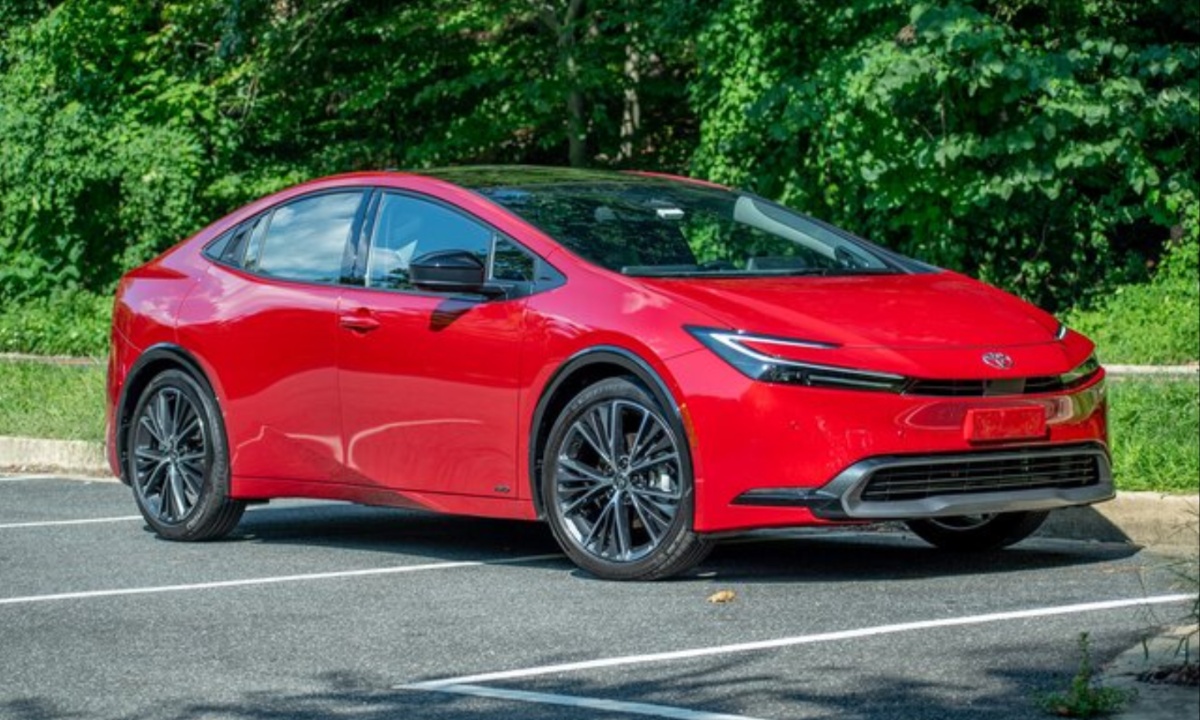
The Prius employs a specialized Atkinson-cycle engine specifically optimized for hybrid application, paired with regenerative braking that recaptures energy typically lost during deceleration.
Additionally, the Prius features an aerodynamic design with a coefficient of drag as low as 0.24, reducing highway energy consumption. The vehicle’s thermal management system also plays a critical role in its real-world efficiency.
The Prius retains engine heat effectively, reducing the frequency of cold starts that dramatically increase fuel consumption. Many owners report that the Prius performs exceptionally well in moderate temperature conditions but maintains impressive efficiency even in extreme climates.
Driver feedback systems also contribute significantly to the Prius’s real-world performance. The dashboard displays real-time efficiency metrics that encourage economical driving habits, subtly training drivers to operate the vehicle in ways that maximize fuel economy.
This human-machine interaction creates a positive feedback loop where drivers naturally adopt driving patterns that help achieve advertised efficiency.
Fleet data collected from hundreds of thousands of Prius vehicles shows remarkable consistency between EPA estimates and actual performance across diverse geographic regions, driving patterns, and seasons.
This consistency has built Toyota’s reputation for honest fuel economy ratings and made the Prius a benchmark for predictable efficiency in the automotive industry.
2. Honda Civic
The Honda Civic, particularly in its standard non-performance configurations, has established itself as a model that reliably delivers on its EPA promises.
The 2023 Civic sedan with the 2.0-liter naturally aspirated four-cylinder engine carries an EPA rating of 33 mpg combined (30 city/37 highway), figures that owners consistently report matching or exceeding in normal driving conditions.
Honda’s engineering philosophy emphasizes efficient internal combustion technology without overly complex systems. The Civic employs a sophisticated variable valve timing and lift electronic control (VTEC) system that optimizes engine breathing across different operating conditions.
This, combined with direct injection and reduced internal friction, allows the engine to operate efficiently across a broad range of scenarios. The continuously variable transmission (CVT) in most Civic models keeps the engine operating at optimal rpm for maximum efficiency, avoiding the fuel economy penalties often associated with traditional automatic transmissions.
The Civic’s relatively light weight compared to similarly sized vehicles also contributes significantly to its real-world efficiency. The tenth and eleventh generation models utilize high-strength steel and advanced structural engineering to reduce mass while maintaining safety and rigidity.
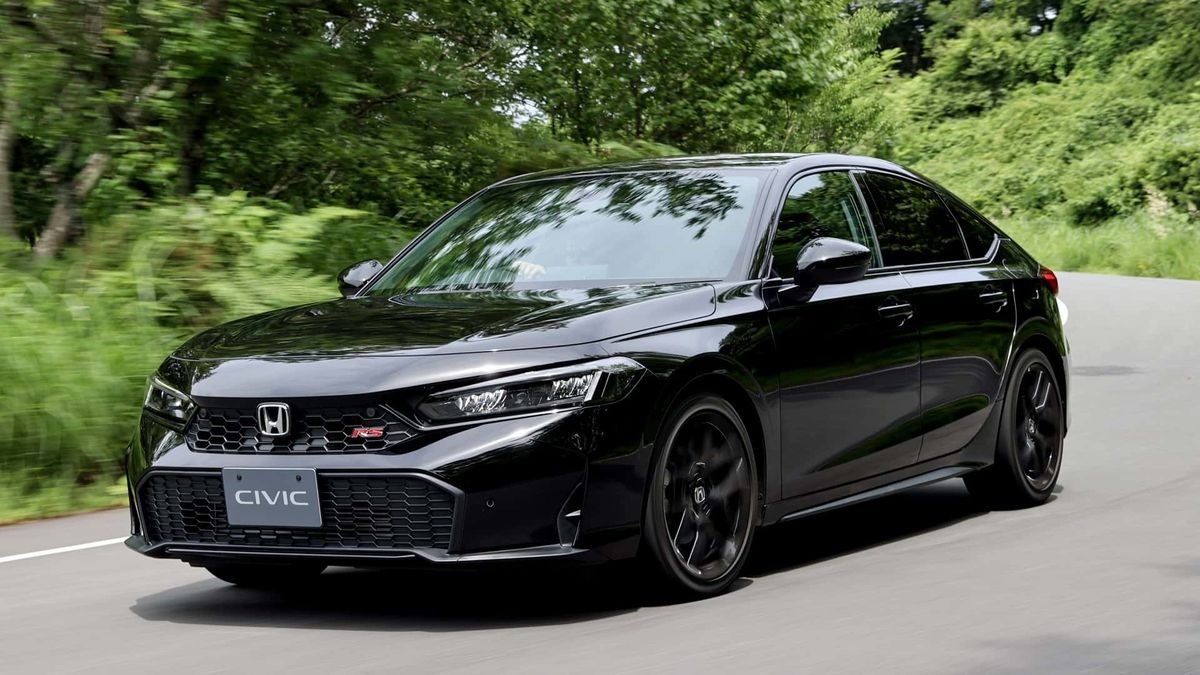
This weight advantage requires less energy to accelerate and maintain speed, directly translating to better fuel economy in typical driving scenarios.
Independent testing by automotive publications consistently shows the Civic achieving 31-35 mpg in mixed driving, aligning closely with EPA combined ratings.
Consumer Reports testing has found the Civic exceeding EPA estimates by approximately 2 mpg in their standardized test protocol. Owner-reported data through various tracking applications shows similar results, with the average Civic owner reporting 32-34 mpg in mixed driving conditions.
Perhaps most impressively, the Civic maintains its efficiency advantage even when driven somewhat aggressively. Many competitors show dramatic efficiency drops when pushed harder, but the Civic’s efficiency remains relatively stable across different driving styles, making it a reliable performer for drivers who don’t always prioritize hypermiling techniques.
3. Mazda MX-5 Miata
The Mazda MX-5 Miata represents a rare achievement in the sports car segment a vehicle that delivers driving excitement without sacrificing fuel economy promises.
The 2023 Miata with its 2.0-liter naturally aspirated engine and six-speed manual transmission carries an EPA rating of 29 mpg combined (26 city/34 highway), numbers that owners consistently report achieving or exceeding in real-world use.
Mazda’s SkyActiv technology philosophy emphasizes efficient combustion through high compression ratios, reduced friction, and optimized air-fuel mixtures rather than focusing exclusively on downsizing and turbocharging like many competitors.
This approach yields engines that perform efficiently across broader operating conditions, not just in specific scenarios optimized for EPA test cycles. The Miata’s lightweight construction weighing approximately 2,400 pounds represents perhaps the most significant factor in its real-world efficiency.
This minimal mass requires substantially less energy to accelerate and maintain speed compared to heavier sports cars with similar performance metrics.
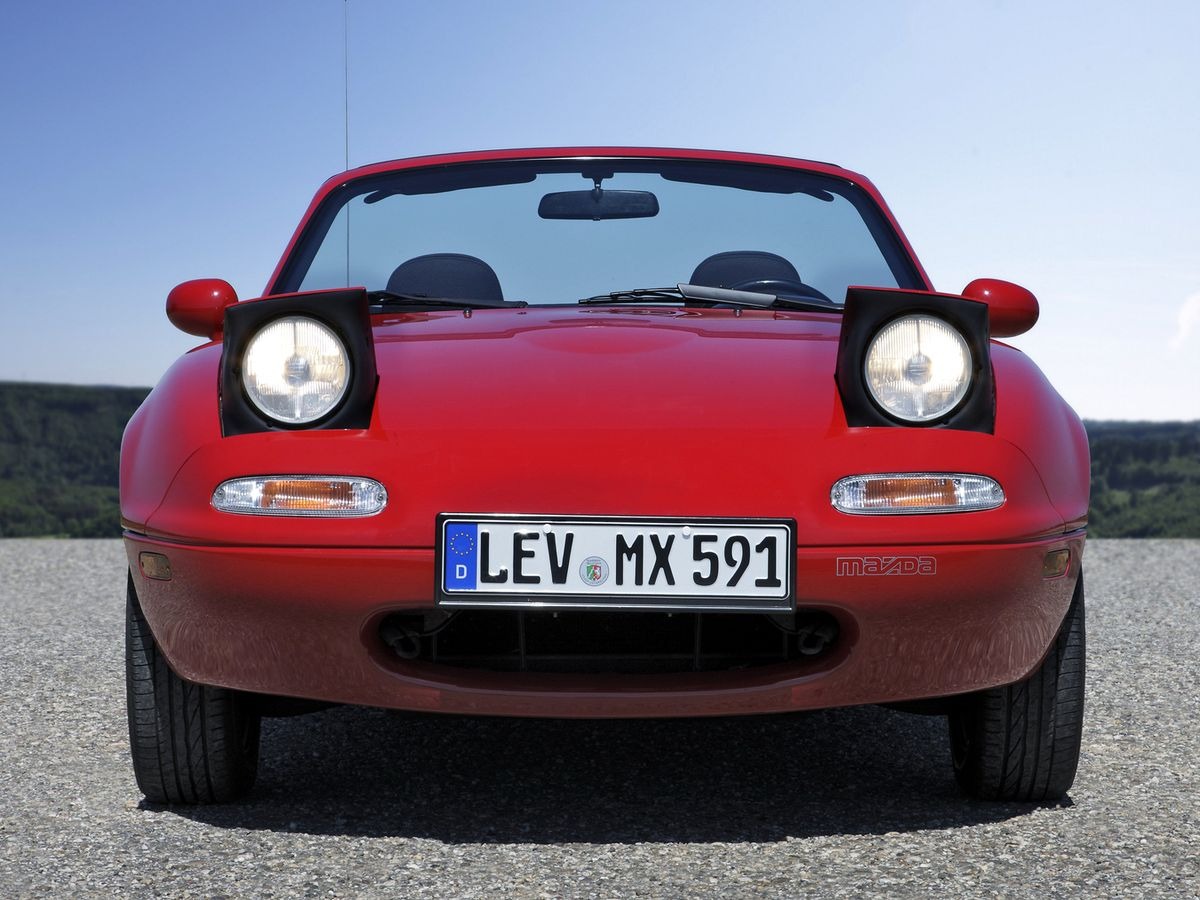
The power-to-weight ratio allows Mazda to utilize a modestly sized, naturally aspirated engine that can deliver satisfying performance without the fuel economy penalties associated with larger displacement engines.
Aerodynamic efficiency also plays a crucial role in the Miata’s highway fuel economy performance. Despite its convertible design, the car demonstrates remarkably low drag characteristics when the top is up, contributing to consistent highway efficiency that frequently exceeds EPA estimates.
Many owners report achieving 36-38 mpg during steady highway cruising, surpassing the official 34 mpg highway rating. Enthusiast publications have consistently documented the Miata’s efficiency in real-world testing.
Car and Driver’s long-term test of a 2019 Miata recorded 29.8 mpg over 40,000 miles of mixed driving slightly exceeding the EPA combined rating despite being driven enthusiastically by automotive journalists. Owner forums and fuel tracking applications show similar patterns, with the average Miata achieving 28-31 mpg in typical use.
Perhaps most remarkably, the MX-5 delivers this efficiency without compromising the direct, engaging driving experience that has defined the model since its introduction.
This combination of efficiency and performance has contributed significantly to the model’s enduring popularity and reputation for honest marketing claims.
4. Toyota RAV4 Hybrid
In the competitive compact SUV segment, the Toyota RAV4 Hybrid has established itself as a model that consistently delivers on its efficiency promises.
The 2023 RAV4 Hybrid carries an EPA rating of 40 mpg combined (41 city/38 highway), figures that real-world testing and owner experiences repeatedly confirm as accurate or even conservative.
The RAV4 Hybrid’s ability to meet its EPA ratings stems from Toyota’s decades of hybrid system refinement. The system employs a 2.5-liter Atkinson-cycle four-cylinder engine paired with electric motors that deliver a combined 219 horsepower.
This configuration provides ample power for typical driving scenarios while maintaining efficiency. The sophisticated power management software seamlessly transitions between electric and gasoline power modes to maximize efficiency based on driving conditions and demand.
Unlike some hybrid systems that show their best efficiency only in urban environments, the RAV4 Hybrid maintains impressive performance across varied driving conditions.
The all-wheel-drive system employs a dedicated electric motor for the rear axle, eliminating the mechanical drag associated with traditional AWD systems when four-wheel traction isn’t needed.
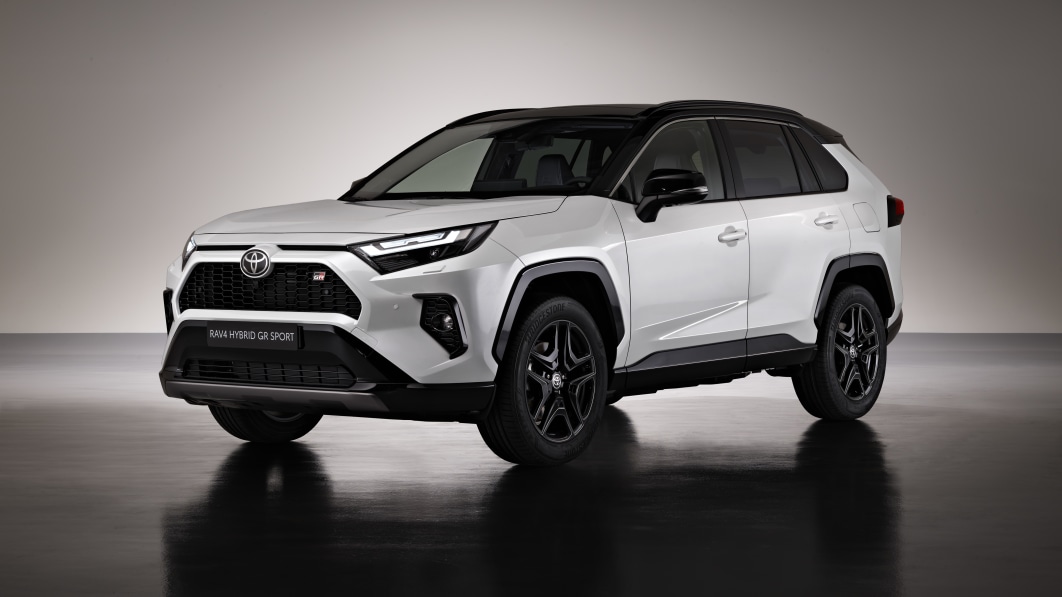
Consumer Reports testing has shown the RAV4 Hybrid achieving 41 mpg in their standardized testing protocol, slightly exceeding the EPA combined rating.
Owner-reported data through platforms like Fuelly shows average real-world consumption between 38-42 mpg across thousands of vehicles and millions of miles, demonstrating remarkable consistency across different drivers, conditions, and geographic regions.
The RAV4 Hybrid performs particularly well in moderate-speed suburban driving, where it often exceeds its EPA ratings by leveraging frequent opportunities for regenerative braking and electric-only operation.
Even in cold weather conditions that typically reduce hybrid efficiency, the RAV4 Hybrid demonstrates less efficiency degradation than many competitors, maintaining performance closer to EPA ratings year-round.
This consistent real-world performance has contributed significantly to the RAV4 Hybrid’s popularity and reputation as a practical, efficient option in the crossover market. For consumers seeking predictable fuel costs and efficiency without sacrificing utility, the RAV4 Hybrid delivers on its promises with remarkable consistency.
Also Read: 5 Vehicles That Make Great Workhorses and 5 That Fail At It
5. Hyundai Ioniq Electric
While all electric vehicles are subject to range variations based on driving conditions, the Hyundai Ioniq Electric (prior to the IONIQ 5) consistently stands out for delivering EPA-estimated range in real-world conditions.
The 2022 Ioniq Electric with its 38.3-kWh battery carries an EPA range rating of 170 miles and an efficiency rating of 133 MPGe combined (145 city/121 highway), figures that independent testing has repeatedly verified as achievable in typical use scenarios.
The Ioniq Electric’s exceptional efficiency stems from a holistic approach to energy conservation. Its aerodynamic design achieves a coefficient of drag of just 0.24, matching the Toyota Prius as one of the most aerodynamically efficient vehicles on the market.
This streamlined profile minimizes energy consumption at highway speeds, where aerodynamic drag becomes the primary efficiency challenge for electric vehicles.
Hyundai’s battery and motor management systems demonstrate remarkable optimization, delivering consistent performance across varied temperature conditions.
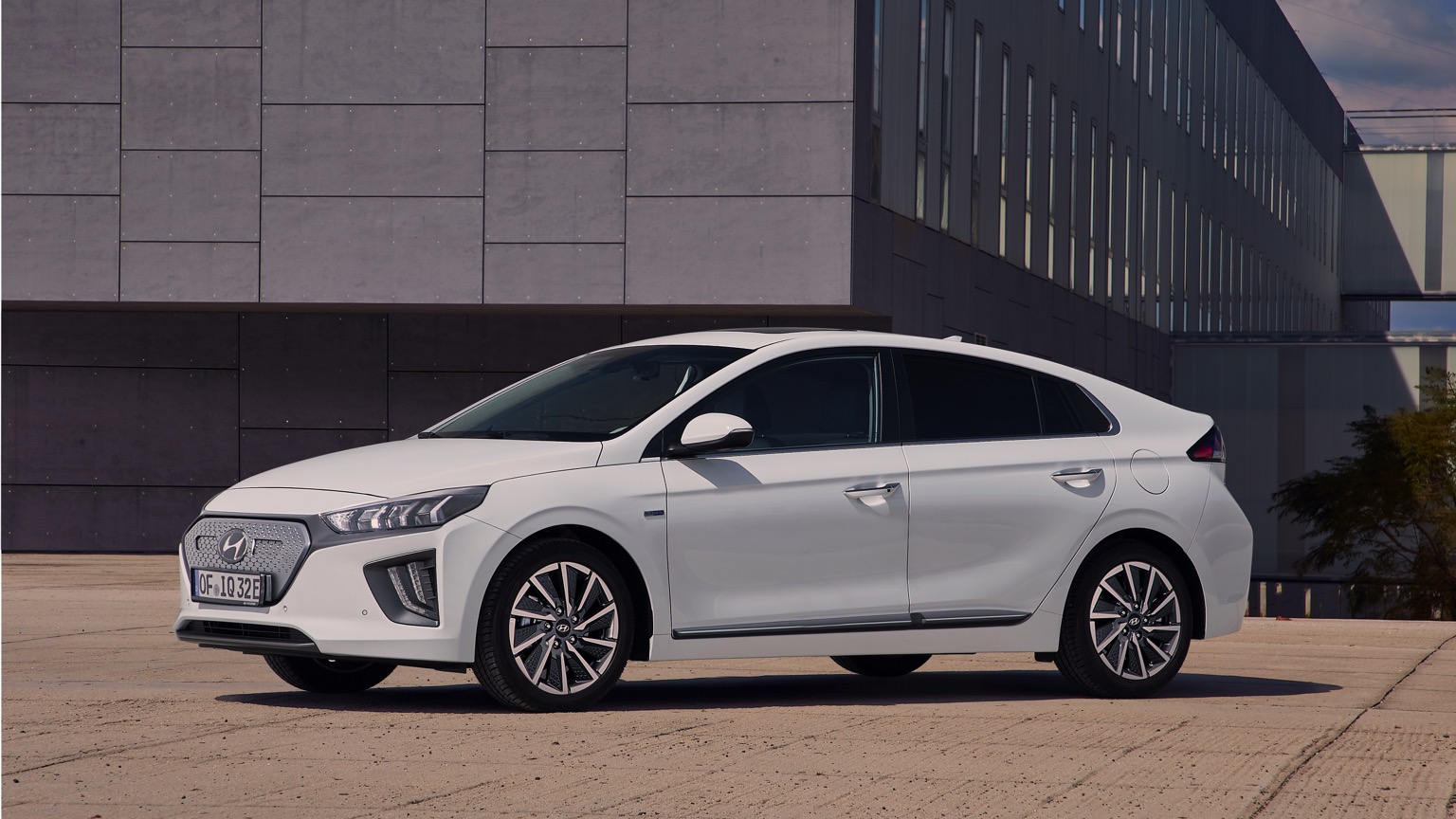
Unlike some electric vehicles that show dramatic range reductions in cold weather, the Ioniq Electric maintains more consistent performance year-round through effective thermal management of its battery pack.
The regenerative braking system offers multiple levels of energy recuperation, allowing drivers to adapt the system to their preferences and driving conditions.
This flexibility enables experienced EV drivers to maximize efficiency by capturing more kinetic energy during deceleration events, further helping achieve EPA-estimated range in real-world use.
InsideEVs’ 70-mph range test of the Ioniq Electric recorded 167 miles of highway range at constant speed, coming remarkably close to the EPA total range estimate despite the challenging test conditions.
Consumer reports testing showed similar results, with the Ioniq Electric achieving range numbers within 5% of EPA estimates across varied driving conditions.
Owner-reported data through EV-specific tracking applications shows the average Ioniq Electric achieving 3.9-4.1 miles per kWh in mixed driving, aligning almost exactly with EPA efficiency estimates.
This consistency has built consumer trust in Hyundai’s electric offerings and established the Ioniq Electric as a benchmark for predictable efficiency in the electric vehicle segment.
Cars That Never Come Close to EPA Ratings
Despite impressive official numbers, these notorious underperformers consistently fall short of their EPA estimates by significant margins in real-world driving situations.
The frustrating gap between advertised and actual efficiency means owners face unexpectedly high fuel costs and more frequent fill-ups than the window sticker led them to believe.
While technically legal in their testing compliance, these vehicles represent some of the industry’s most misleading examples of the disparity between laboratory testing and everyday driving results.
1. Ford Mustang Shelby GT500
The Ford Mustang Shelby GT500 represents one of the most dramatic examples of a vehicle that consistently falls short of its EPA fuel economy ratings in real-world conditions.
The 2022 GT500, powered by a supercharged 5.2-liter V8 producing 760 horsepower, carries EPA ratings of 14 mpg combined (12 city/18 highway) figures that prove virtually unattainable in typical ownership scenarios.
The fundamental challenge facing the GT500 stems from its performance-oriented design and the temptation it presents to drivers. The supercharged V8 delivers intoxicating acceleration and an aggressive exhaust note that encourages enthusiastic driving, dramatically increasing fuel consumption beyond the moderate acceleration patterns used in EPA testing procedures.
The power delivery characteristic of a supercharged engine means that even small throttle inputs can dramatically increase fuel consumption compared to naturally aspirated designs.
Road & Track’s long-term test of a GT500 recorded an average of just 11.4 mpg over 6,000 miles nearly 20% below the EPA combined rating. Car and Driver testing showed similar results, with their GT500 test car achieving only 13.7 mpg on their 75-mph highway fuel economy test route, significantly below the 18 mpg highway EPA rating.
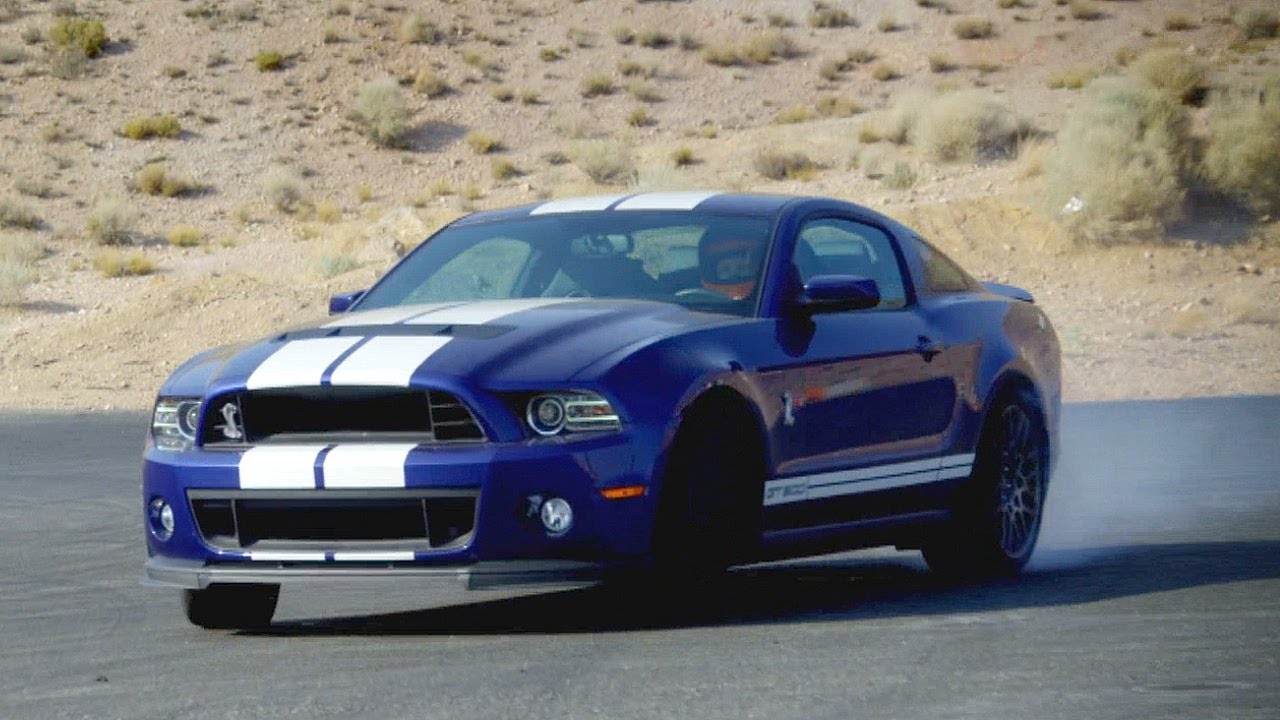
Owner-reported data through fuel tracking applications consistently shows real-world averages between 10-12 mpg in mixed driving. The vehicle’s aerodynamic package, optimized for high-speed stability and cooling rather than efficiency, creates significant drag that particularly impacts highway fuel economy.
The wide, high-performance tires increase rolling resistance compared to more efficiency-oriented designs. Additionally, the GT500’s transmission gearing is optimized for acceleration and track performance rather than fuel economy, keeping engine speeds higher than would be ideal for efficiency.
Perhaps most significantly, the GT500 exhibits particularly poor efficiency during cold starts and short trips, with the engine management system running rich fuel mixtures until the operating temperature is reached.
For owners who use their GT500 for short commutes or errand running, this warm-up period can constitute a significant portion of driving time, further reducing real-world economy.
While enthusiasts who purchase vehicles like the GT500 rarely prioritize fuel economy, the significant disparity between EPA ratings and real-world performance creates unrealistic expectations about operating costs and driving range, leading to potential frustration even among buyers who accept the car’s thirsty nature.
2. Jeep Wrangler
The Jeep Wrangler, particularly in its four-door Unlimited configuration with larger engine options, consistently demonstrates a significant gap between EPA fuel economy ratings and real-world performance.
The 2023 Wrangler Unlimited Rubicon with the 3.6-liter V6 engine and eight-speed automatic transmission carries EPA ratings of 19 mpg combined (17 city/23 highway), figures that most owners find unattainable in typical driving conditions.
The Wrangler’s fundamental design prioritizes off-road capability above all else, resulting in several characteristics that compromise real-world efficiency.
Its boxy, upright shape creates substantial aerodynamic drag, particularly impacting highway fuel economy, where air resistance becomes the dominant factor affecting efficiency.
The vehicle’s aggressive, knobby all-terrain tires dramatically increase rolling resistance compared to the highway-oriented tires used during EPA testing procedures.

Additional off-road equipment, including heavy-duty axles, transfer case, and skid plates, adds significant weight that must be accelerated and maintained at speed, requiring more energy than the more streamlined crossovers that dominate today’s SUV market.
The Wrangler’s solid axles and recirculating-ball steering system create more mechanical drag than the independent suspension systems and rack-and-pinion steering used in most modern vehicles.
Consumer Reports testing of the Wrangler Unlimited recorded just 16 mpg, 16% below the EPA combined rating. The disparity becomes even more pronounced in real-world highway driving, where the Wrangler’s poor aerodynamics result in fuel economy that frequently falls 20-25% short of EPA highway estimates, particularly at typical interstate speeds of 70-75 mph.
Owner-reported data through various fuel tracking applications shows the average four-door Wrangler with the V6 engine achieving just 15-17 mpg in mixed driving, consistently below EPA estimates, regardless of driving conditions or geographic region.
Many owners report single-digit fuel economy when using the vehicle in off-road environments for which it was designed. Aftermarket modifications, extremely common among Wrangler owners, further exacerbate the efficiency shortfall.
Roof racks, larger tires, lift kits, and auxiliary lighting all increase aerodynamic drag and vehicle weight, pushing real-world fuel economy even further below EPA estimates. Since these modifications are not reflected in standardized testing, the gap between official ratings and actual performance grows substantially for modified vehicles.
3. BMW M3/M4
The BMW M3 sedan and its two-door M4 coupe counterpart represent performance vehicles that consistently fall short of their EPA fuel economy ratings in real-world use.
The 2023 M3 Competition with its twin-turbocharged 3.0-liter inline-six engine producing 503 horsepower carries EPA ratings of 18 mpg combined (16 city/22 highway), figures that prove elusive for most owners during typical driving.
The fundamental challenge for these performance-oriented BMWs lies in their high-strung turbocharged engines and the driving behavior they encourage. The twin-turbo inline-six delivers peak torque at very low RPM, tempting drivers to access that power frequently during daily driving.
Each instance of boost pressure significantly increases fuel consumption beyond the moderate acceleration patterns used in EPA test cycles. The engine’s character effectively rewards aggressive driving with thrilling acceleration, creating a feedback loop that decreases real-world efficiency.
Motor Trend’s long-term test of an M4 Competition recorded an average of just 15.2 mpg over 20,000 miles – approximately 15% below the EPA combined rating.
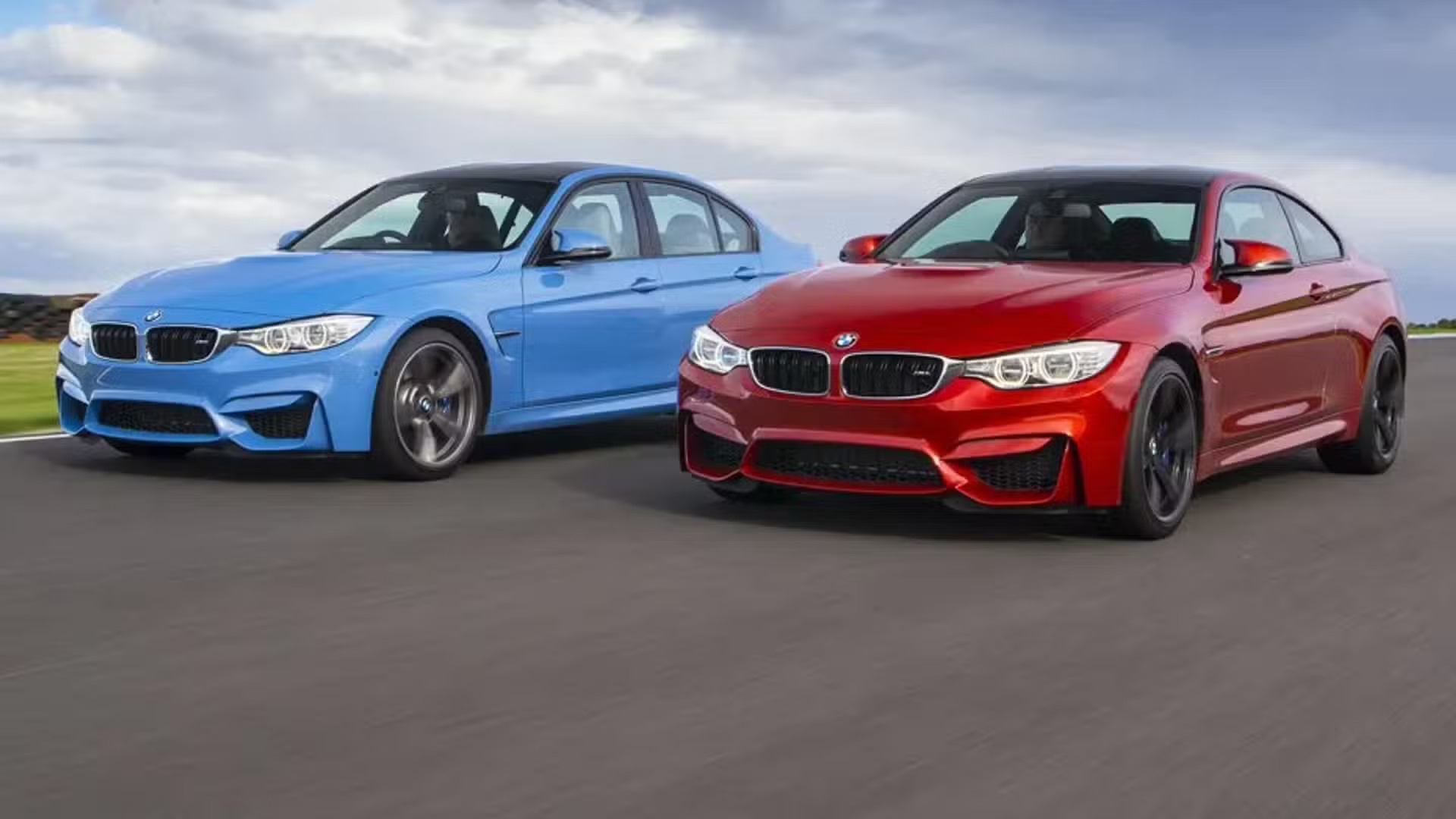
Car and Driver testing showed the M3 Competition achieving only 19 mpg in their 75-mph highway test loop, significantly below the 22 mpg highway EPA rating. Owner-reported data through various tracking applications consistently shows real-world averages between 14-16 mpg in mixed driving.
The vehicles’ sophisticated all-wheel-drive systems (in xDrive models) add mechanical complexity and weight that increase energy consumption, particularly during urban driving with frequent stops and starts.
The performance-oriented transmission programming keeps engine speeds higher than would be ideal for efficiency, prioritizing immediate power delivery over fuel economy.
BMW’s M models typically come equipped with wide, high-performance tires that increase rolling resistance significantly compared to standard models.
Additionally, these vehicles often spend considerable time idling whether warming up, cooling down after spirited driving, or simply caught in traffic further reducing real-world efficiency compared to the standardized test cycle.
Most dramatically, the efficiency gap widens substantially when these vehicles are driven as their engineering invites.
Owners who regularly access the cars’ considerable performance capabilities even briefly during normal commuting report fuel economy figures as much as 40% below EPA estimates, highlighting how performance-oriented vehicles are particularly susceptible to driver behavior influences on real-world efficiency.
4. Range Rover Sport
The Land Rover Range Rover Sport, particularly with its more powerful engine options, represents a luxury SUV that consistently falls short of its EPA fuel economy ratings.
The 2023 Range Rover Sport with the 3.0-liter turbocharged inline-six mild hybrid powertrain carries EPA ratings of 20 mpg combined (18 city/26 highway), figures that real-world testing and owner experiences demonstrate are optimistic under typical driving conditions.
Several factors contribute to the Range Rover Sport’s efficiency shortfall. Its substantial weight approximately 5,400 pounds for base models and over 5,700 pounds for higher trims requires significant energy to accelerate and maintain speed.
While the EPA test procedures account for vehicle weight, they don’t fully capture the efficiency impact during real-world acceleration scenarios. The vehicle’s powerful engines are designed to deliver effortless acceleration despite the substantial mass, encouraging a driving style that frequently accesses the available torque.
The transmission programming prioritizes smooth, immediate power delivery over maximum efficiency, keeping the engine operating in higher consumption regions of its power band during normal driving.
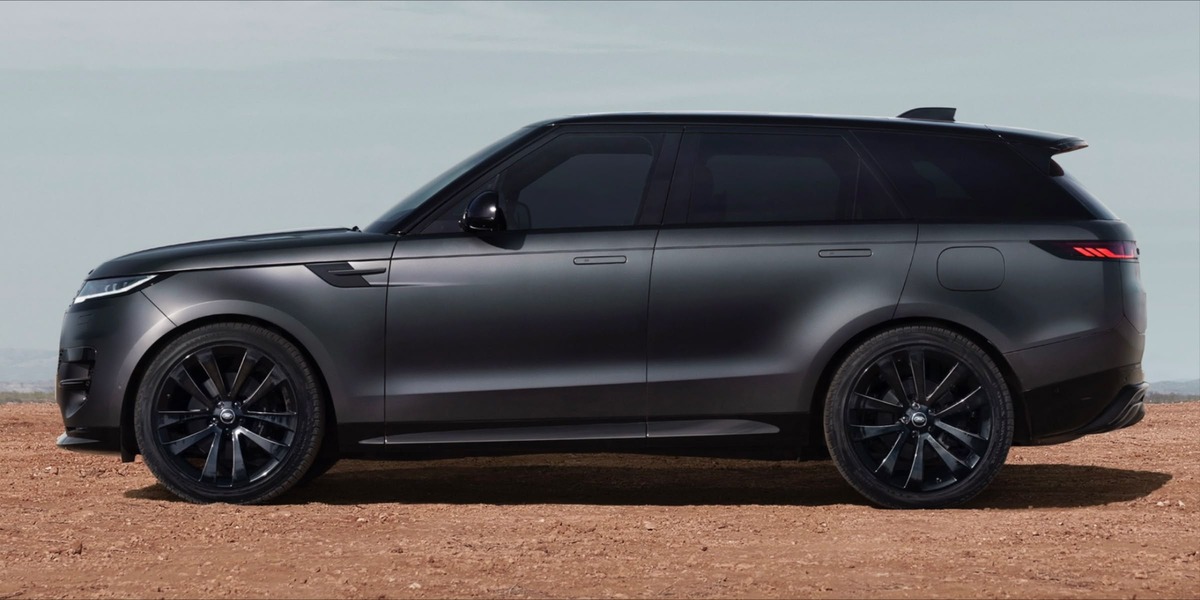
Aerodynamically, the Range Rover Sport’s upright stance and broad frontal area create substantial drag at highway speeds despite efforts to streamline the design.
This particularly impacts highway fuel economy, where air resistance becomes the dominant factor affecting efficiency. Most owners report highway economy 3-5 mpg below EPA estimates during typical interstate driving at 70-75 mph.
Motor Trend testing of a Range Rover Sport recorded an average of just 16.7 mpg in mixed driving approximately 16% below the EPA combined rating.
Owner-reported data through fuel tracking applications shows average consumption between 16-18 mpg for six-cylinder models in real-world use across diverse driving conditions and geographic regions.
The complex all-wheel-drive system, while providing excellent traction and off-road capability, creates additional mechanical drag compared to simpler two-wheel-drive systems.
The sophisticated air suspension system, standard on most models, requires energy to operate the compressor that maintains ride height, further impacting efficiency during typical driving.
Perhaps most significantly, the Range Rover Sport’s luxury-oriented design philosophy prioritizes noise isolation and comfort over absolute efficiency.
Additional sound insulation adds weight, climate control systems run at higher capacity to maintain comfort, and auxiliary systems consume more energy than in more efficiency-focused vehicles.
5. Subaru WRX
The Subaru WRX, despite its relatively modest engine displacement and sedan configuration, consistently demonstrates a significant gap between EPA fuel economy ratings and real-world performance.
The 2023 WRX with its turbocharged 2.4-liter flat-four engine and CVT transmission carries EPA ratings of 21 mpg combined (19 city/25 highway), figures that most owners find unattainable in typical driving conditions.
Several factors contribute to the WRX’s efficiency shortfall. The turbocharged boxer engine’s character encourages spirited driving, with peak torque available at relatively low RPM.
This tempts drivers to frequently access the turbocharger’s boost pressure, dramatically increasing fuel consumption compared to the moderate acceleration patterns used in EPA testing procedures.
The distinctive turbo surge and engine note effectively reward aggressive driving, creating a feedback loop that decreases real-world efficiency. The WRX’s standard all-wheel-drive system, while providing excellent traction, adds mechanical complexity and driveline losses compared to front-wheel-drive competitors.
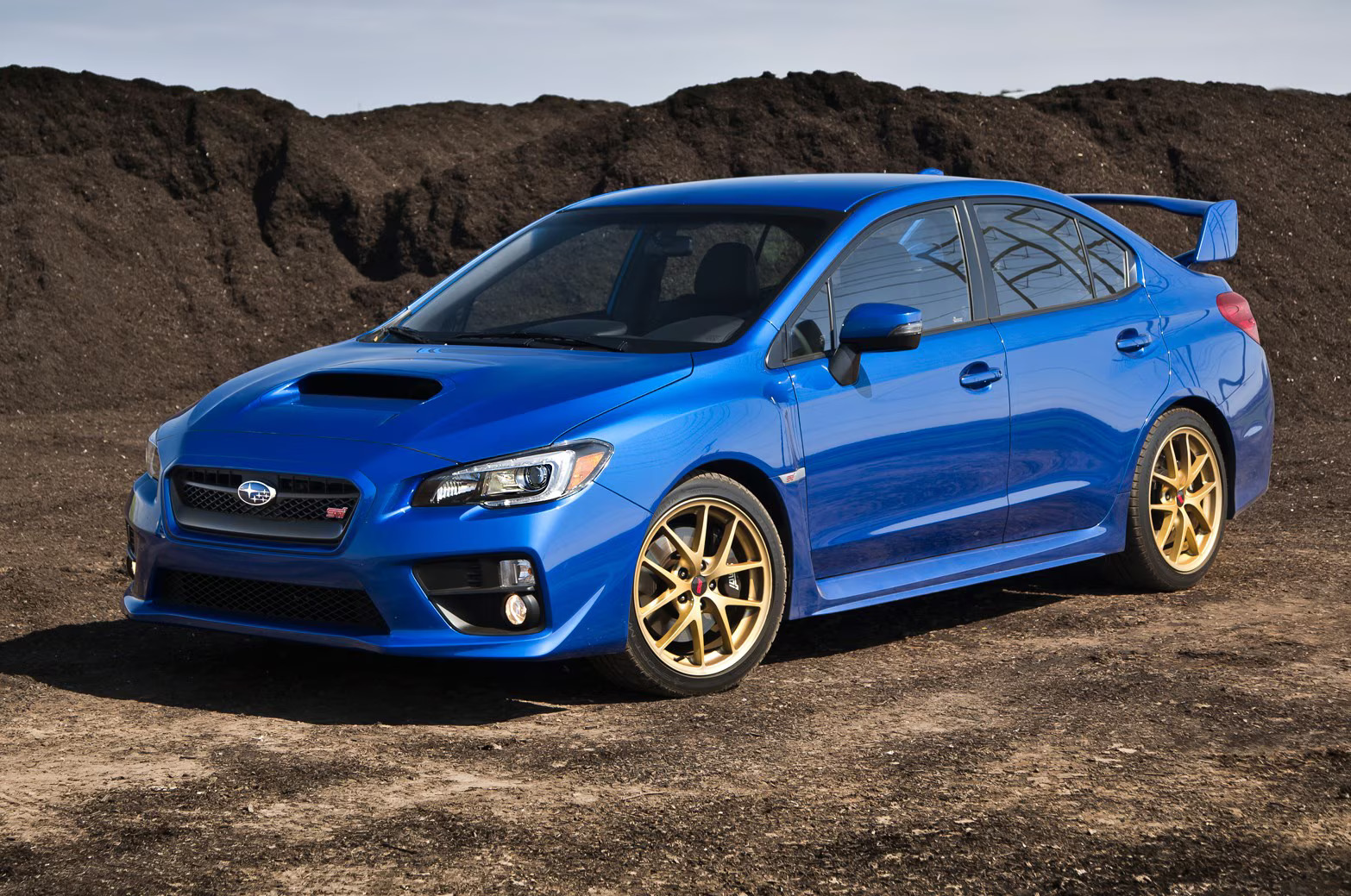
The central differential and additional drivetrain components increase parasitic losses, particularly during part-throttle cruising, where efficiency is most critical for achieving EPA estimates.
Car and Driver testing of the WRX recorded just 18 mpg in their mixed driving evaluation – approximately 14% below the EPA combined rating. Their 75-mph highway fuel economy test yielded 22 mpg, significantly below the 25 mpg highway EPA rating.
Owner-reported data through fuel tracking applications consistently shows real-world averages between 17-19 mpg in mixed driving. The WRX’s considerable appeal to enthusiast drivers further widens the gap between laboratory and real-world results.
The vehicle’s rally heritage and performance-oriented design encourage a driving style far removed from the standardized test cycles used for EPA ratings. Owners who regularly access the car’s considerable performance capabilities report fuel economy figures as much as 30% below EPA estimates.
Additionally, the WRX’s relatively high-strung engine exhibits particularly poor efficiency during cold starts and short trips, with the engine management system running rich fuel mixtures until operating temperature is reached.
For owners who use their WRX for short commutes or errand running, this warm-up period can constitute a significant portion of driving time, further reducing real-world economy.
While the WRX’s efficiency shortfall may be expected given its performance orientation, the gap between EPA ratings and real-world performance creates unrealistic expectations about operating costs and driving range, leading to potential frustration even among buyers who accept the car’s sporting nature.
Also Read: 5 Vehicles With Great Crash Protection and 5 That Crumble

